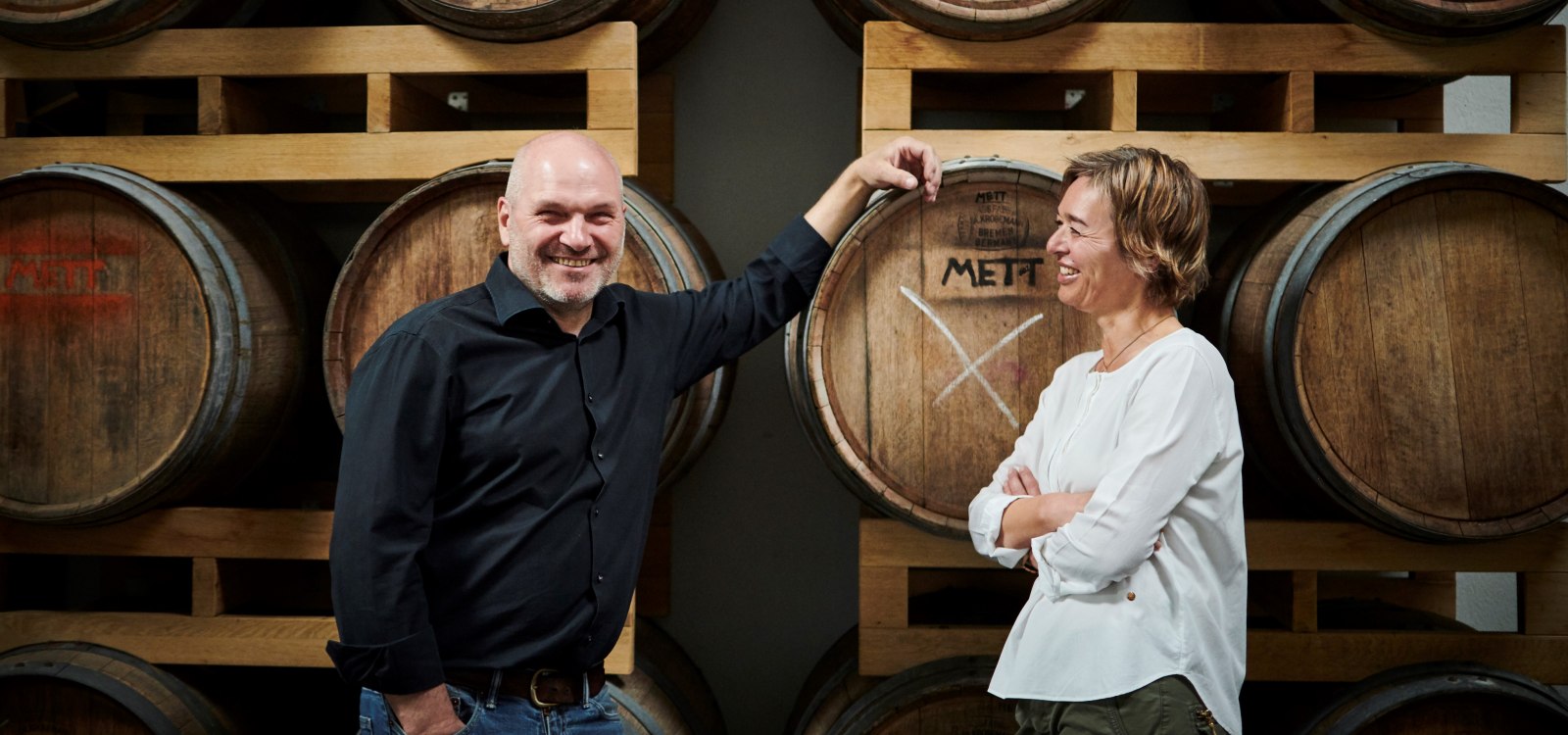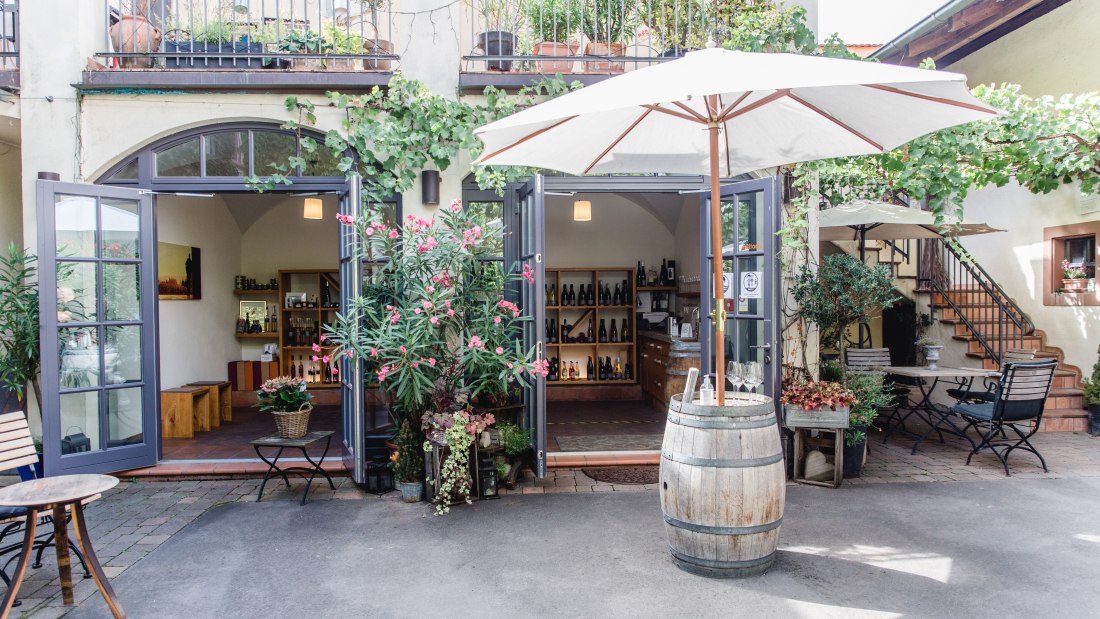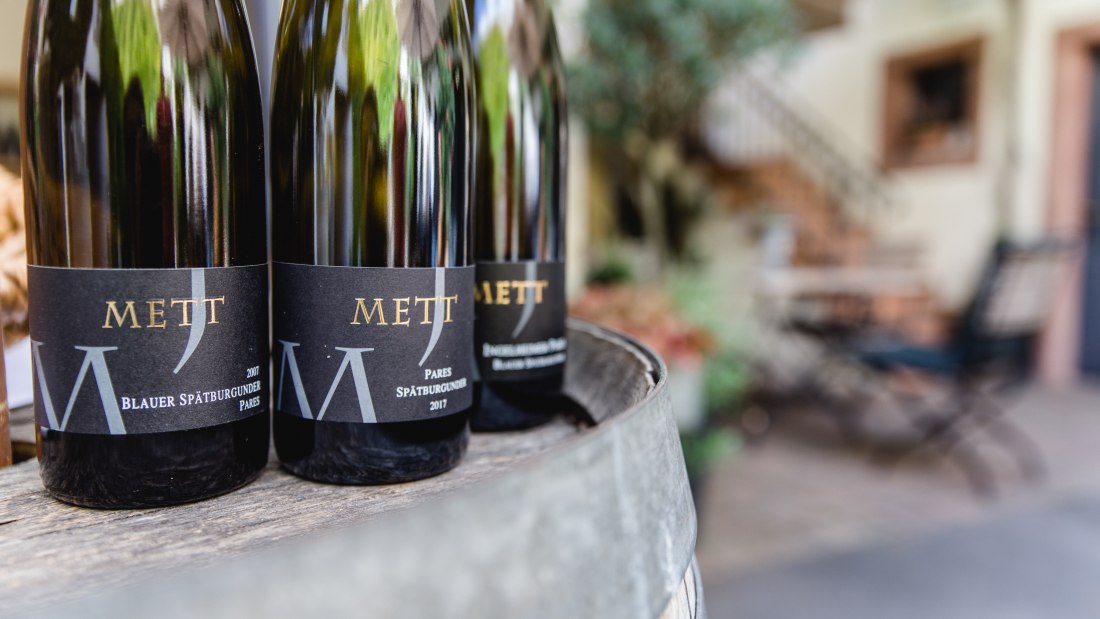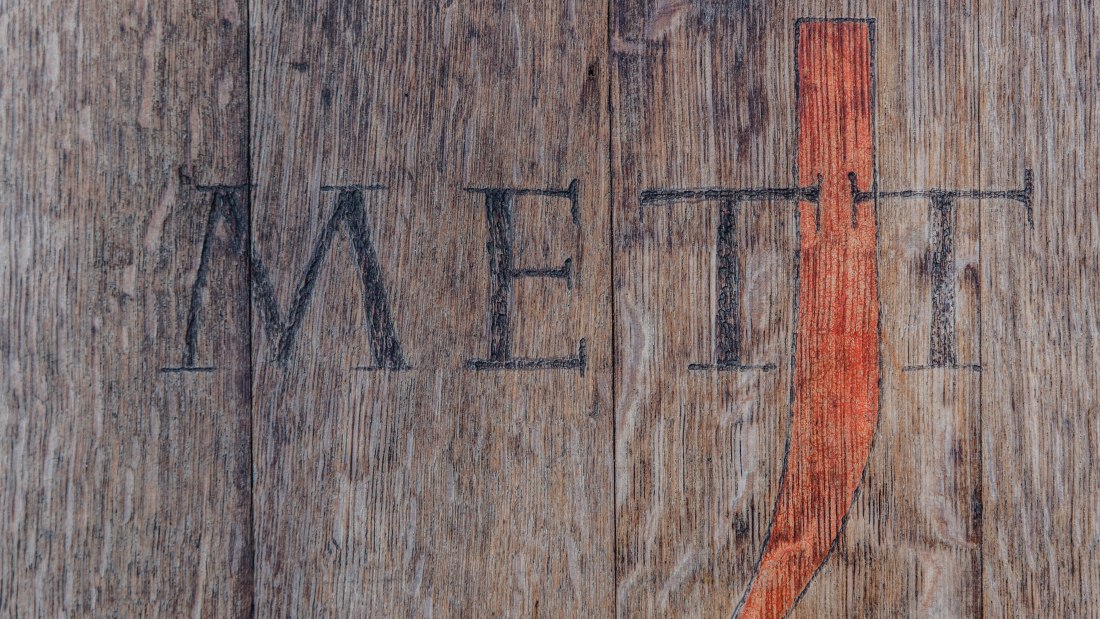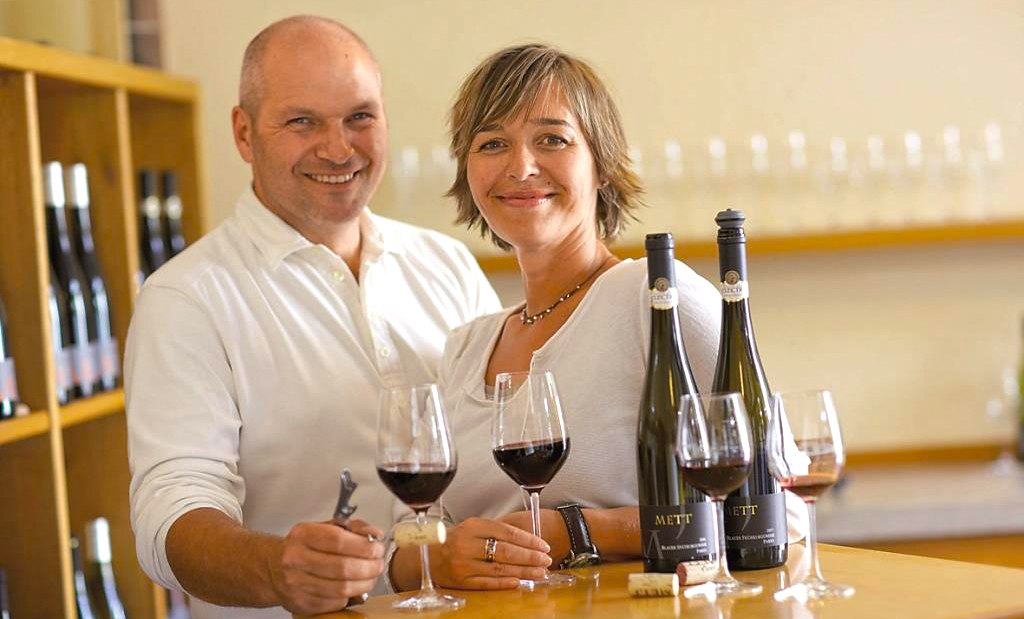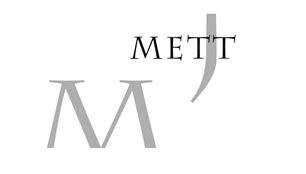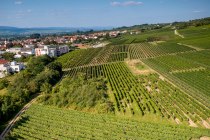Winery Mett
In the heart of Ingelheim, the Mett family has been cultivating their winery since 1842, now in the fifth generation. In 2004, Jürgen Mett and his wife Silke Weidenbach also took over the vineyards of the in-laws, the renowned Weidenbach winery. More than 70 percent of the vineyard is planted with red varieties, mostly with Pinot Noir and Pinot Madeleine, the traditional varieties of red wine town. Jürgen Mett pursues a clear and open philosophy: he places value on honest wines, the origin and type of variety unadulterated and may well have corners and edges. Especially the reds are often full-bodied and tanned, with a hint of oak. The white wines convince with their freshness and fine fruitiness. Especially for the high-quality Pinots Jürgen Mett regularly receives great praise from the trade press. All wines can be tasted and bought in the Vinothek with cross vault in an appealing atmosphere.

